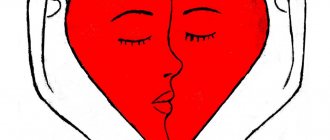For many years, debates have continued in psychology about the importance of mechanical memory in human life. Some consider it to be too primitive a form, working within the framework of the first signaling system (which is also present in some animals). Others are inclined to consider it the basis without which it would be difficult to master certain types of material that is not subject to logic and comprehension. One way or another, without it, it really can be difficult at certain moments, and therefore its development should be given no less attention than all other types of memory.
Mechanical memory
The main difference between this type of memory is the learning of any information only in the form in which it is presented. Mechanical memory is based on the neural connections of the first signaling system. When a person studies information that is expressed in words, then the words themselves will remain in the head, exactly as they were perceived. If we are talking about physical exercises, then a person will remember the movements themselves that he needs to repeat, and only in the sequence in which they were visually perceived. In this case, the logical or semantic content of the material fades into the background, but, of course, does not lose its meaning. The volume of mechanical memory is inexhaustible.
What is memory and what are its capabilities?
Memory is the process of storing and subsequently reproducing an individual's experience. In psychology, memory has been studied for a long time and is interpreted in different ways:
- The associationist theory considered association (connection, connection) to be the main unit of memory. The mechanical addition of associations should become the basis of memory. In the future, it is rethought and deepened.
- Behaviorism viewed memory as a process through which various motor and language skills are acquired.
- Gestalt psychology studied the processes of remembering, focusing on the intention of the subject. This scientific direction studies the social nature of human memory.
At the present stage, memory is considered as a cognitive process, which is characterized by the following properties:
- Volume. It shows the ability to memorize and retain information.
- Speed of memorization (speed of voluntary memorization).
- Readiness to reproduce (how well a person applies available information).
- Reproduction accuracy (the quality of storing and reproducing information).
- Duration of retention (the ability to retain the necessary information for a certain time).
What are the capabilities of our memory? Memory can be trained to remember more. But don’t think that forgetting is the result of faulty memory, emphasizes psychologist and researcher from the University of California Benjamin Storm. Forgetting ensures the proper functioning of memory and thinking, freeing up resources for new tasks.
Neuroscientist Maria Wimber from the University of Birmingham (UK) and colleagues, using a special brain scan, found that memories can “compete” with each other for memory resources. This mechanism helps to select the desired memories from a number of similar ones.
Memory Properties: Freepick
Scientists are also researching what to do to improve memory performance and expand its capabilities. They have established a number of techniques that help activate human memory.
The memory must be turned on
When people do not wait to check that they have learned information, they forget it very quickly. Human cognitive researcher Professor Brad Wyble has found that when people don't expect to be tested, they often don't remember anything. However, when it comes to testing, memorization is two or even three times better.
Classical music improves memory
Listening to classical music increases the activity of genes that are associated with memory and learning processes, and at the same time reduces the activity of genes that affect neurodegenerative processes. Research by a group of authors has shown that classical music actively influences the human genome.
Daytime naps improve memory fivefold
The experiment showed that a daytime nap that lasts less than an hour improves memory performance fivefold. Two groups of subjects memorized pairs of unrelated words. Then the first group slept for 45-60 minutes, and the second watched the video. After testing, it turned out that in the first group the level of memorization was higher.
Scientists have yet to discover the subtle mechanisms of memory. However, what we know today can and should be used to expand our own capabilities.
When does mechanical memory work best?
Of course, this method of memorization, especially in schools or universities, is not an indicator of the level of knowledge. However, it also has its positive sides. For example, if you are learning a foreign language, you must remember not only how new words are pronounced, but also how they are written. This cannot be done unless you concentrate on learning them in precise visual and auditory images. When mastering difficult professional terms, it is mechanical memory that is involved, otherwise the latter are remembered and reproduced with errors and speech distortions. Also, mechanical memory works when familiarizing yourself with simple physical exercises in physical education classes or in gyms.
The positive result of memorizing this or that material using rote memory is based on fixing certain connections between parts of the information being studied according to the principle of associations.
However, it is not enough just to memorize the necessary information in its external manifestation; it is important to be able to retain it in memory for a long time. This is accomplished due to the great plasticity of the nervous system. And after just a couple of repetitions, strong connections are formed and consolidated in the head. This is most often observed in those who have truly outstanding mechanical memory. If a person does not have such abilities, the necessary information can be learned through repeated repetition, due to which weak nerve connections become stronger, the necessary paths between certain parts of the cerebral cortex, which are important in remembering the information received, are repeated.
Characteristic
Mechanical memory is characterized by the following features:
- it is always voluntary, that is, it is carried out consciously, has a goal (to learn specific material), uses a special technique (multiple repetition) to achieve it, and requires volitional efforts;
- most often it is verbal (words are memorized) - in relation to movements, smells, melodies, the process of acquiring professional skills is more active;
- it is short-lived: if a poem or a new foreign word is not repeated, it will be forgotten;
- its volume is limited: at one time each person can learn only a certain number of words, formulas, quatrains.
Mechanical memory is also characterized by the fact that it is not at all plastic. If initially, using it, a person remembers distorted information with errors, later he reproduces it in the same way, because he does not realize the incorrectness. An example is learning a foreign language. If you immediately learn words in the wrong transcription, in the future such pronunciation will be firmly entrenched in the cerebral cortex, with the receptors of which MP is associated, and it will be much more difficult to relearn than to immediately learn everything correctly.
The primitive and non-plastic form of MP is confirmed by numerous experiments. If you even slightly change the conditions for reproducing information that was memorized in this way, the person will have difficulty completing the task given to him. For example, if he is asked to recite a poem, changing the places of the quatrains in it, or replacing one of the values in the formula, or setting other settings on the simulator. The result will be the same - errors and constant hitches.
All of the above features should be taken into account by teachers during training. You should not give your child too much material to automatically memorize. In order to harmoniously develop both types of memory (both mechanical and logical), it is necessary:
- teach the child to set a goal in accordance with the task given by the teacher (learn a formula/poem/words in English);
- help him in mastering the technique of multiple repetitions (in order to remember the material not in 10 times, but in 2-3);
- train willpower;
- develop a verbal perception system;
- teach how to transfer MP from short-term to long-term through constant repetition of memorized material.
Gradually, during the learning process, starting from elementary school, it is necessary to develop the child’s logical memory so that by the age of 10-11 it prevails over the mechanical one. But you shouldn’t abandon the latter either. Both play different but important roles in the formation and formation of a full-fledged and successful personality.
How does rote learning of material occur?
The main technique of rote memory is learning by repeatedly reading, watching or repeating certain elements. These manipulations are very primitive, their essence lies in one hundred percent repetition of the same material in the images of the first signal system, which helps to firmly consolidate the nerve connections.
As for studies, material learned mechanically is reproduced only in expressions and actions originally taken as a basis, without any deviations. If mistakes were made during training, they will be repeated when reproducing the material.
The same applies to movements: a memorized physical exercise or a simple dance will be reproduced in exactly the same form in which it was presented. If, when repeating movements or material, conditions other than those used during memorization are created, the mechanically memorized exercise will be repeated with difficulty, since it will be quite difficult for a person to adapt to the changes. For this reason, the exercise cannot be repeated exactly as it was learned.
The influence of motor memory on the cognitive system
For some, motor memory is just muscle memory, which is well developed due to excellent physical data, but in reality this is far from the case. Motor memory should not be separated from the cognitive system. And here it is sometimes difficult to determine the degree of influence of motor memory on mental ability or, conversely, the influence of the cognitive sphere on human motor skills.
Scientists have proven that the development of fine motor skills in preschool children has a beneficial effect on their cognitive sphere. First of all, the connection between the development of fine motor skills and a child’s speech ability has been repeatedly proven. The hands and feet have nerve endings that need constant work. Performing fine motor skills involves the following systems:
- Cognitive system.
- Visual system.
- Nervous system.
- Muscular system.
Giphy
- Skeletal system.
Thus, it turns out that motor memory cannot function without the work of the cognitive, nervous and muscular systems. Kinetic memory works after a person consciously and with involvement performs certain work. After repeated performance of active motor actions, muscle memorization occurs.
As an example, we can consider the activities of professional figure skaters. To perform certain combinations on the ice, athletes have to train hard and for a long time under the guidance of a coach who knows exactly how to perform this or that movement.
Every jump, movement, and slide of an athlete on the ice must be performed correctly and competently, and for this almost all psychological processes are involved in the work, this is attention, memory, hearing, since all movements are accompanied by music, the visual and cognitive system.
The athlete needs to remember and consolidate in motor memory exactly the correct execution of a jump or movement, which means it is still selective.
Photo by Polina Tankilevitch: Pexels
The selection of the necessary information occurs through comprehension and understanding of the sequence of movements in work. A person determines what information is worth remembering and concentrates his own strength and abilities on it. Motor memory and the cognitive sphere are constantly in close relationship.
Continuing this topic, it is worth saying that in many European countries, trainings and programs in gerontology are actively being developed, which are aimed at maintaining and preserving the mental and physical abilities of people in old age.
To maintain mental ability, the program must include exercises that involve fine motor skills. People perform precise, small movements that require concentration, cognition, and motor memory. Older people, performing specified actions regularly, activate kinetic memory and other cognitive processes.
Logical memory
The main difference between logical memory and mechanical memory is that it is aimed to a greater extent not at memorization, but at the concept of the meaning of the information received. Logical memory is based on the work of thinking. In order for information to be logically memorized, it is first analyzed, broken down into components, which are divided into important and not very important.
Logical memory is the result of mental work, which finds its expression in the form of words, diagrams, drawings, and so on, reflecting in the human mind primarily the meaning of what is being studied, and not visual or auditory manifestations.
Involuntary memory of a child
In early childhood, memory is part of sensations and perceptions. Adults ask the child to remember the name of an object, someone’s name, or some action. Memory becomes part of communication and part of language acquisition.
During the preschool period, memory develops rapidly, outstripping other abilities. The active development of all types of memory that occurs at this time will in the future become the basis for the full development of the baby.
At the age of 2-3 years, the child repeats words and rhyming lines. Before the start of the school period, the leading role in the child is played by involuntary memorization, based on the baby’s impressions - motor, auditory, visual. In early and middle preschool age (3-4 years), both memorization and reproduction are still carried out mainly involuntarily, appearing as part of various types of activities. The younger the child, the greater the role impressions and feelings play in memorization. Observations are important for the development of involuntary memory. By focusing a child's attention on an object or phenomenon, long-term memory can be formed.
There are some basic patterns of involuntary memory:
- What is remembered is something that is an unexpected, strong irritant (scream, bright light, fireworks).
- Factors that stand out from the expected series are remembered: the unusualness of the object, the contrast of color, the interruption or, on the contrary, the resumption of the process.
- We involuntarily remember those objects or phenomena that are somehow close, significant, and arouse special interest or emotion.
- What a person actively works on is remembered.
- What is remembered is what is important and relevant to a person. For example, something that is related to the purpose and content of human activity.
From about the age of four, preschoolers begin to develop voluntary memory. While playing and carrying out instructions from adults, children begin to consciously both memorize and recall, and closer to school age, involuntary memorization gives way to deliberate recall.
A preschool child does not yet know how to set tasks for himself; he needs the help of his parents, their encouraging phrases like “let’s repeat it one more time,” “let’s read it one more time.” The main development of voluntary memory occurs during schooling. At this time, the child develops a logical memory, which helps to work with large volumes of text.
If a child shows a desire to remember something and tries to find and use logical connections for memorization, this is a favorable sign of the formation of voluntary memory.
It is best to engage with a child in the form of a game (exercises and tips for adults and children can be found in our article Exercises to improve memory. But an equally important point is daily communication with the child. Ask him about how his day went, what was interesting , what they played, what he would like to do tomorrow.This way you help him both remember and express his thoughts.
Differences between logical memory and mechanical memory
First of all, these are the features of reproduction: logical memory manifests itself in the form of an independently meaningful presentation, while mechanical memory manifests itself in the form of an accurate repetition of information.
Logical memory has many components; it should not only be a superficial analysis of the material, but also its understanding, comprehension and reproduction in verbal form. Logical memory, just like mechanical memory, needs repetition of the information provided. Without regularly returning to the information received, knowledge will not be 100% consolidated in memory.
Another significant difference is that with rote memory, repetition is aimed at remembering the same connections, which are unchanged. That is why the same text or movement is reproduced with each repetition. For example, schoolchildren memorize poems in a clearly established sequence. It is a mechanical memory which in any other case will not achieve its purpose.
When memorizing logically, a person tries to understand the meaning of the information being studied, which with each new repetition may differ from the previous one. The meaning remains the same, but it can be expressed in a new way each time. Logical and mechanical memory are very different in the methods of study.
Special exercises
The process of forming verbal-logical memory often occurs in preschool or early school age. The task of parents is to help children develop this type of memory by all available means, since the entire school curriculum is built on children’s ability to read, analyze, remember and retell information. It is especially important to work with children who have speech disorders, since they are worse than others in remembering new words, learning poems, and retelling fairy tales and events.
- Complete the assignment. The child only needs to voice the sequence of actions that he must perform once: go to the kitchen, open the refrigerator, in the refrigerator there is a vegetable drawer in which you take a red and green apple, wash the apples, take a towel, dry them and bring them to the room, give the red one to your mother , and eat the green stuff yourself, or vice versa. The child must remember and follow the entire algorithm; if it doesn’t work out the first time, continue training. Instructions, of course, need to be changed and complicated over time.
- Practice retelling. Read the texts and ask your child to retell them; if that doesn’t work, read again. Ask questions about the text that would stimulate thinking - why do you think the main character answered this way? What fairy tale is the situation similar to, etc. By answering questions, the child learns to think, draw conclusions, and formulate statements.
- Seven phrases. Tell your child seven phrases, for example: the dog is barking, the boy is crying, the fire is burning, it’s cold in winter, hot in summer, birthday, tomorrow is a day off. Let the child draw a picture for each phrase that would help him remember the phrase. At the end of the work, let him reproduce all the phrases from the pictures, help if necessary. Repeat the task the next day - will he remember or not?
- Mosaic. This is the name of the task in which the adult needs to ask the child several different words, 7-10 pieces, and the child must combine them into a single story. That is, come up with a story with meaning in which the specified words would appear.
- Group the words. Come up with 5-10 words that could be divided into groups: cup, parrot, table, titmouse, fork, sofa, chair, swallow, frying pan, board. Give your child the task of first repeating the sequence, and then breaking it into logical groups. Let him try to do this on his own; he will probably combine them in different variations, but this is only good, because it means that the child is thinking. If attempts do not lead to anything, suggest groups - furniture, birds, kitchen utensils.
- What did you hear? You need to choose an interesting poem and slowly read it to the child, and then ask him to depict (schematically) all the objects or animals that appeared in the poem.
- Answer the question. The task is practically a school one. It is necessary to familiarize yourself with the text and answer questions about it, both direct and those that require reflection. The child must learn to read, understand the material and find answers to any complex questions in it.
- Associations. Prepare pictures with various images, select logical words for them. For example: a picture of a Christmas tree, the word New Year, a cup for tea, lightning for rain, etc. Lay out the pictures in front of the child and read the words, let him demonstrate his associations. Then explain the principle by which the selection is made, and ask them to supplement the pictures with other associative words, and not just those that you named. Christmas tree - New Year, firewood, bird's nest, pine needles, forest, picnic.
- Lots of special games on .
Thanks to such simple and interesting tasks, the child will develop not only his memory, but also replenish his knowledge about the world around him, norms of behavior, and acquire new skills and abilities.
Productivity
Logical memory is much more productive than mechanical memory. The explanation for this fact is simple - logical memory is based on numerous and diverse connections. It has been scientifically proven that information that remains in the head through logical memorization is retained much better than exactly the same information, but learned through rote memory.
This is interesting: as practice shows, material that was learned using logical memory can be retained for life, without subsequent repetitions. But mechanically learned information is forgotten very quickly; remains in the head for a long time only with regular repetitions. The study of logical and mechanical memory continues to this day, because the capabilities of the brain have not yet been 100% explored.
Advantages and disadvantages
The advantages of mechanical memory include the following:
- With the correct method of memorization, the material will quickly be deposited in your head.
- After repeating what you have memorized at night or early in the morning, the material will be better absorbed.
- There is no need to invent an explanation for certain elements, because all the necessary terms have been memorized.
The disadvantages of mechanical memory include:
- Short storage period for important information.
- The material is forgotten almost completely.
Advantages of semantic memory:
- Long-term memory.
- Easy to digest due to understanding the data.
- Interest in learning additional materials.
The disadvantages of semantic memory include:
- Spending time studying data.
Semantic learning is based on understanding, the processes of thinking. For children with underdeveloped memory, this method is very useful, because the path of development lies in the development of skills in the ability to generalize material and highlight the main features in it.
Rote memorization gets its name from the frequent repetition of difficult-to-learn material. This process is reminiscent of the operation of some mechanical device.
That is why the name of memory became mechanical. Psychologists suggest that this type of learning occurred due to school curriculums.
Interesting facts about memory
Thanks to memory, a person uses experience every day: his own and his ancestors. However, logical and mechanical memory are complex mechanisms that have their own nuances.
- A person begins to use memory already in the womb; it begins to work 20 weeks after conception. The embryo even reacts to the noise of the ultrasound test. Scientists are of the opinion that a person can remember everything that happened to him not only in childhood, but even in the womb.
- Memory is individual, as it is influenced by many factors. For example, some have better developed visual memory, others have better auditory memory. Information that is interesting to a person is remembered best. But the ability to remember can always be trained.
- Age does not always mean memory decline. You can often hear complaints about poor memory from older people. But this is not entirely true, the whole point is that by adulthood a person stops learning, the skill of straining his memory disappears, and it does not train at all. For example, actors who have spent their entire lives learning new roles can cope with voluminous texts in their old age without any problems. This once again proves that memory development depends only on training, and not on age.
- The habit of forgetting is also present in humans. After all, it is impossible to remember everything, and the ability to forget is a real salvation for the human brain. Memory itself regulates the load, freeing the head from unnecessary information or impressions. But this does not mean at all that old information is completely erased; the data simply moves from the active stage to the passive stage, from where, if desired, it can be retrieved.
Memory can always be improved by training, taking vitamins and eating right.
Training and development
From two to five years of age, a child has a fertile period for improving mechanical memory. During this period of time, it is necessary to read good children's poems to him and teach them together.
Important! You can improve your mechanical memory by mastering foreign languages and memorizing poetic texts. You need to memorize formulas and scientific terms, historical dates and statistical data, product lists, telephone numbers and addresses, geographical names, numbers, first names and patronymics.
Scientists have proven that a person forgets the most information in the first 2 hours after cramming. If you study before bed, much less material will be erased from memory, since during the night's rest it moves from short-term to long-term memory and is then easier to reproduce.
Mechanical memory, according to experts, is the basis for successful learning.
Interest in studying
Exercises for children
- Cascade. An adult reads a list of words. If the child repeats easily, the list increases by one more.
- The parent slowly sounds out 10 words. Children draw them with their fingers on the table, then remember them.
- The child carefully examines the surroundings, then turns away and lists the objects.
- An adult draws a simple composition of figures or a pattern on a sheet of paper. Children watch for one minute, then reproduce it from memory in their notebooks.
- Several different objects or pictures are placed on the table surface. The child looks carefully, then turns away. An adult changes something in the position or completely confuses it. The children's task is to put everything in its place.
- The teacher reads the words, inviting the children to illustrate them using poses, sounds or gestures, then the children try to remember the list.
Repeat text
For an adult, working with text memorization will help increase the volume of mechanical memory. To begin with, you can choose a short passage and try to retell it. Over time, you need to repeat the entire passage, then take 2 texts, increasing the number of characters.
Remembering names
The volume of a person's short-term memory is strongly related to mechanical capabilities. The name of the person just introduced is forgotten because the communication process replaces old information in short-term memory with new information. To remember the name of a friend, you need to pronounce it loudly and clearly, think about how it is similar to its owner.
You can develop mechanical memory more effectively if you follow simple rules:
- Do not take too much information at once, learn in parts;
- Repeat the material at regular intervals;
- Use mnemonics;
- After an hour of work, rest for 15 minutes;
- Diversify the material.
Voluntary memory of a preschooler
Voluntary memory begins to form, as we said above, in middle preschool age, and its first manifestations are clearly noticeable during role-playing games. During such classes, the child is well motivated, because without memorizing the conditions, he will not be able to fulfill the role he has taken on.
An arbitrary type of memory is formed gradually, based on the mental development of the baby.
The prerequisites for the development of voluntary memory in a preschooler are:
- Activity and successful participation in games.
- Performing actions related to the past or future (for example, when you need to talk about something that happened or do something not now, but a little later).
- This is the development of speech, which allows, among other things, to act with imaginary things.
First, the child learns these prerequisites from adults, and then gradually takes over the initiative.
Let us dwell in a little more detail on one of the most important prerequisites for the development of a preschooler’s voluntary memory, which is play.
During the game, the child’s mind develops and important skills are acquired. Word games that involve speech simultaneously develop thinking and memory; didactic games also improve memory and teach you to follow rules and procedures.
In didactic games with children, you should pay attention to several important points:
- Before memorizing, you need to organize the child’s perception by highlighting the characteristics of the object (color, location, shape, quantity).
- When memorizing, you need to analyze and compare, highlight important properties and generalize.
- You should gradually make the game more difficult, for example by reducing the display time or increasing the number of details.
- It is necessary to develop self-control by involving the child in checking the results of memorization and in analyzing the mistakes made.
The process of developing a voluntary type of memory in preschoolers includes the following important points:
- Help from adults who highlight significant moments with hints: requests to repeat, retell, tell; guiding the train of thought with leading questions: “What happened next?” This helps the child gradually learn to comprehend and connect the material for the purpose of memorization.
- Highlighting tasks that encourage recall or memorization.
- The child’s awareness of the need to master special methods of memorization.










